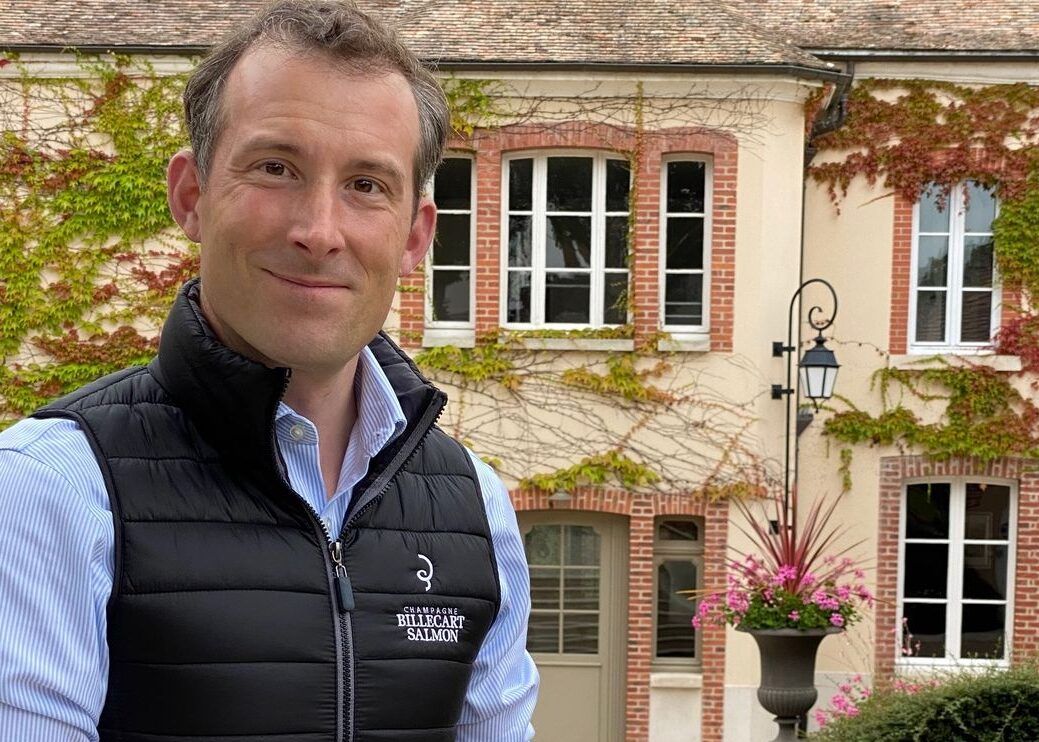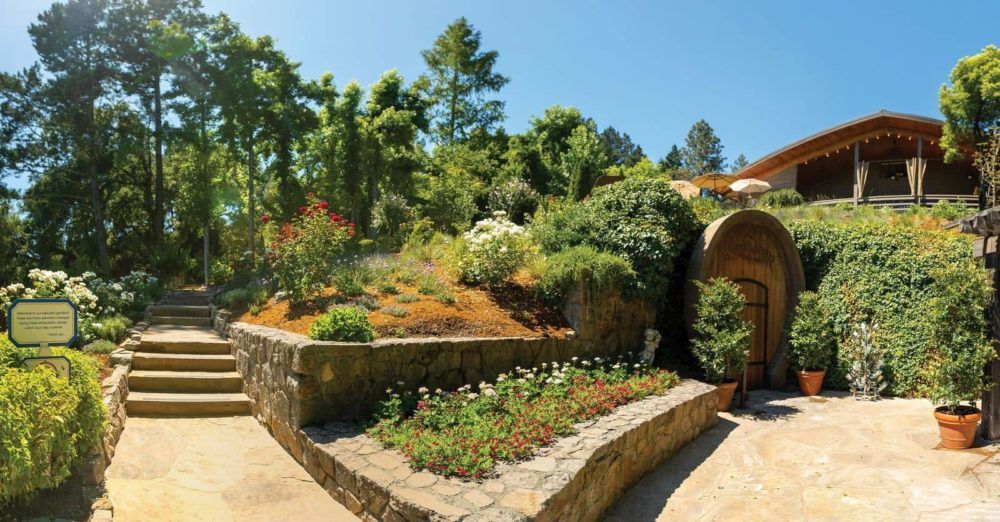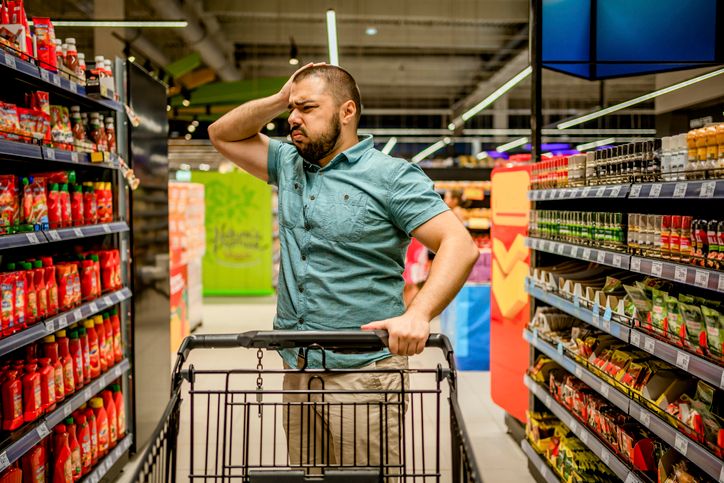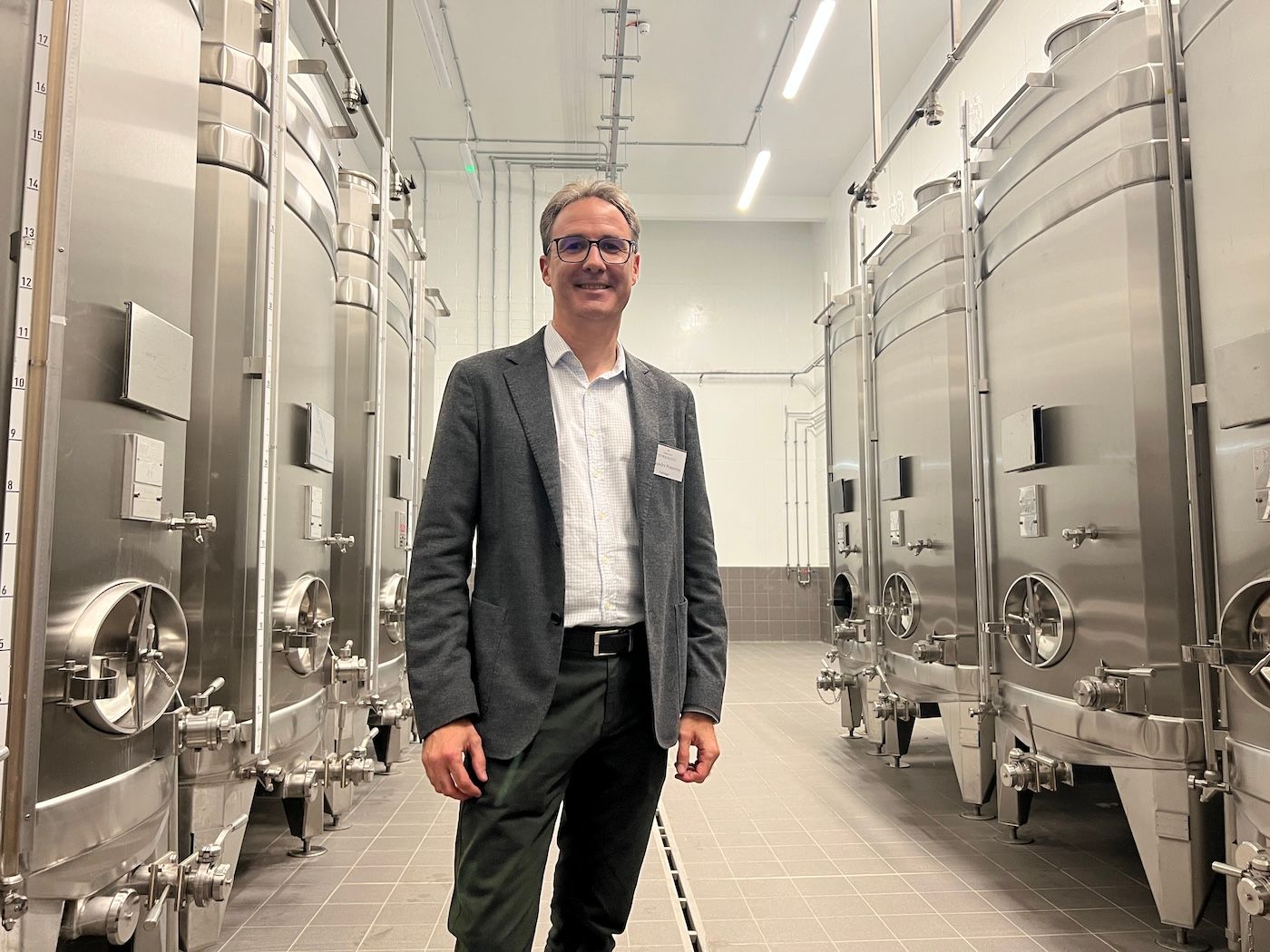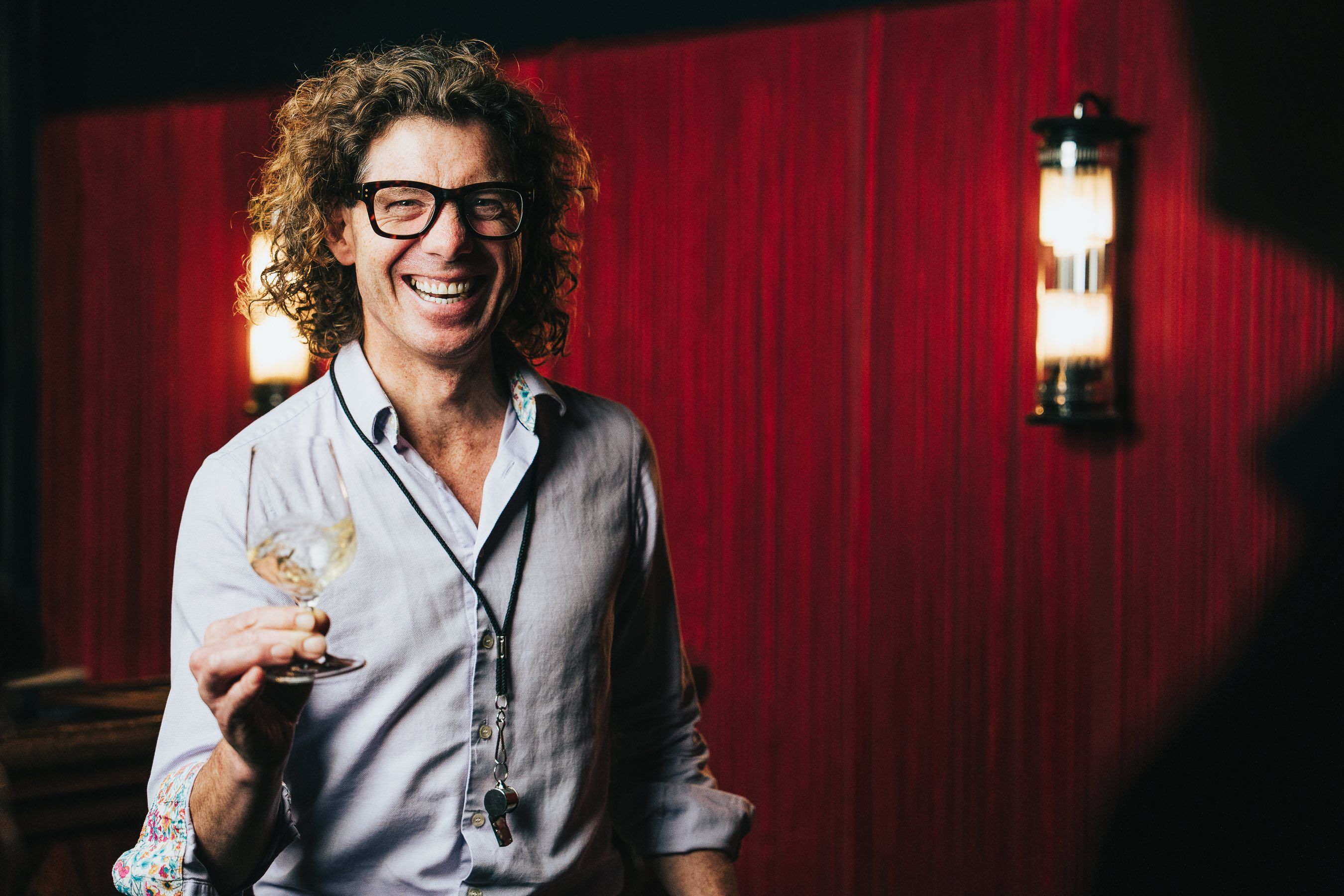“If people drink a glass of Billecart-Salmon and don’t end up with a smile on their face then I don’t think we have done our job properly,” says Mathieu presenting the Elisabeth Salmon Brut Rosé 2008.
Three years since taking over the running of the Champagne Billecart-Salmon wine estate from his cousin François, Mathieu Roland-Billecart, seventh generation family member, is explaining the final seal of approval he needs before he can get one his wines released.
After his eight-person strong ‘tasting committee’ completes an exhaustive series of blind tastings of every vinified plot at every stage of its evolution, it comes down to one thing – opening a bottle of that cuvée on a Friday night with his wife. “And if I get a frown from my wife then I am not sure the cuvée will go,” he confides.
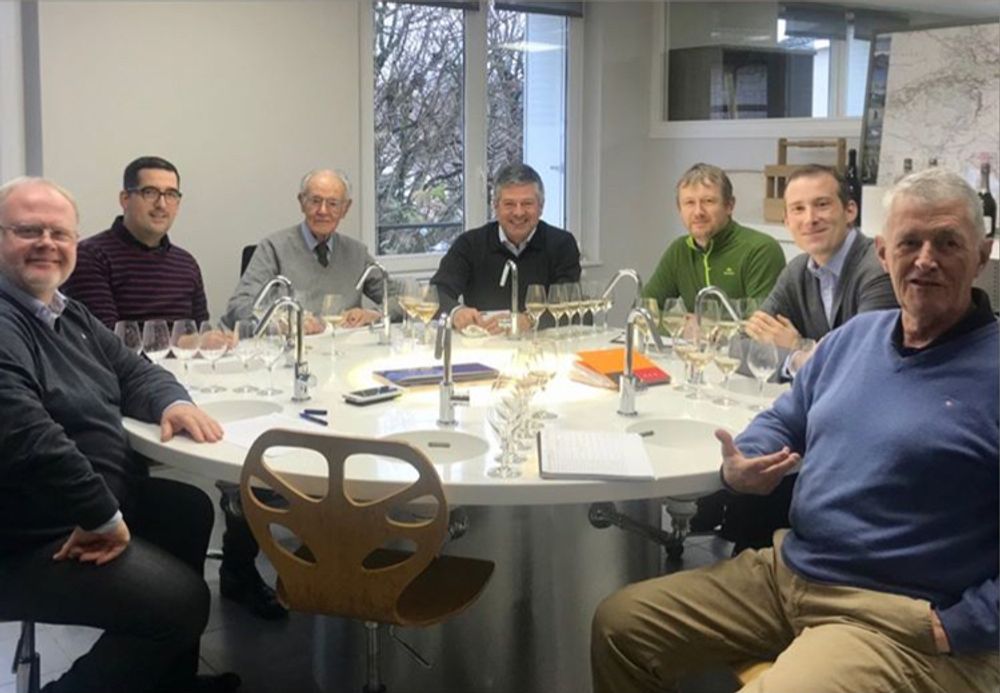
Tasting the 2019 vins clairs: (L-R) Denis Blée, Florent Nys, Jean Roland-Billecart (5th generation), Antoine Roland-Billecart (6th generation), Guillaume Berbe, Mathieu Roland- Billecart (7th generation), François Roland-Billecart (6th generation). 📷By François Domi (ex. chief winemaker for 30 years and consultant for Billecart).
Mathieu explains how key the ‘tasting committee’ is to the estate. Made up of eight people – four family members and four non-family – it has three generations of the Billecart family including his Uncle Jean, who first created the Elisabeth Salmon cuvée, and past and present cellar masters (Florent Nys) – all designed to capture the knowledge and experience about the estate.
“We taste every single base wine as we all have to agree on every blend (everyone has a veto right) we taste every wine which is in the cellar, and blind taste the dosage. Then we have what we call ‘go’ and ‘no go’ decisions – which is with a wine that has been blended – we agree on the dosage, we review it and five months before it is released we have a non-technical tasting – we taste with a small glass, a big glass, cooler temperature, what does it feel like in the glass for our client? If it’s good I take it home and drink it in my living room and that’s the other test because you don’t taste the wine in the same way, and if I get a frown from my wife then I am not sure the cuvée will go – it’s the least technical but the most impactful frown in the world,” he explains.
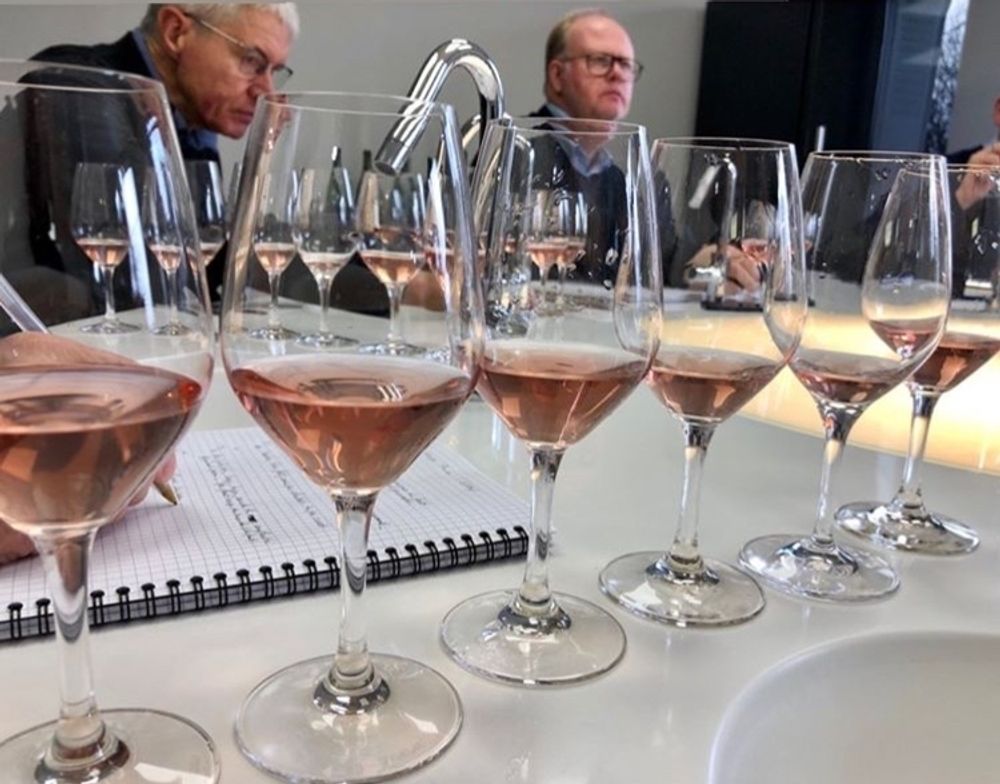
Together, the tasting committee decides on the selection of the wines, blends and dosage to be made.
“It’s a loose concept, there are cuvées she likes and doesn’t like – she’s not big on change – but it’s a very important thing to taste the wine ‘in the circumstance’; in the tasting committee it’s eight people looking at a sink not talking, then in real life I don’t know how many people open one of our bottles in front of a sink and think for 30 minutes about the six samples in front of them so really that’s where my ‘senior consultant’ comes in is a reality check.”
Speaking perfect English, Mathieu explains his worldview with a focused, business perspective learned partly from working as a partner in the real estate corporate finance team at EY for 15 years in London.
“You see I hate the adjective interesting I don’t want to make ‘interesting wines’, I’m not interested in them, I don’t like intellectual wines, those where you feel as though you’ve been intellectually enriched by having one glass. I have three jobs: I am a carer of a natural ecosystem – without the vines we can pack up and go home; I’m a carer of a human ecosystem – without the team and without the growers that we work with, without the clients it’d be nothing; but I’m also a happiness merchant and if people that drink a glass of Billecart-Salmon don’t end with a smile on their face then I don’t think we have done our job properly – and the ‘senior consultant’ is only interested in that perspective.”
So has Mrs Salmon ever rejected a cuvée outright? “It has happened where we have gone back and said “look guys I’m not too sure”… but you see we are the guardians… if something goes wrong with that label, if we have not done it properly… if you have that doubt then you need to take it out.”
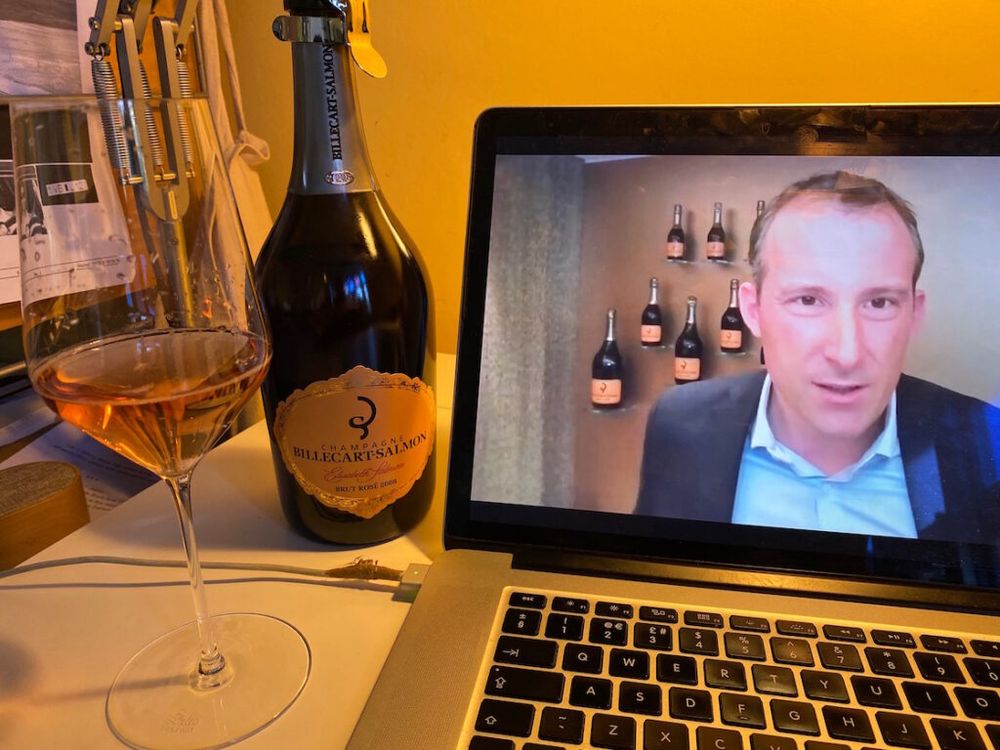
“I’m a happiness merchant!”: Mathieu Roland-Billecart
The new look Elisabeth Salmon Brut Rosé 2008
Although Mathieu says that there are few changes between Elisabeth Salmon Brut Rosé 2008 and the previous vintage, the 2007, there are in fact quite a few – some cosmetic and some fairly significant. Cosmetically the name has been changed from Cuvée Elisabeth to Elisabeth Salmon to bring it line with the house’s other top cuvée, Louis Salmon which, in turn, had to change from simply Cuvée Louis (“because someone felt that the name Louis belonged to them!”) to Louis Salmon. The label of the wine is now also more closely linked pantone-wise to the NV Rosé to establish that it is part of the same family.
More significantly is that for the first time 17% of the wine was vinified at low temperature in oak barrels which are on average 15 years old. 2008 was a fresh year and the oak was used to add extra complexity and richness.
“With the freshness – I can’t remember and Florent can’t remember either an Elisabeth on release that is as fresh – it’s nearest comparable was 1996. Actually it’s a bit of a hybrid of 96, it’s got the bulk, power and longevity of 02 but it has a hint, an element of tertiary that we got in 07.”
“What we tried to do with the oak was gain an additional richness and complexity that didn’t sit naturally in the wine so we look to the oak. But you know when you look at the wine today I’m not sure how much of a difference it made – it’s a couple of years older than 2007 on release but it feels fresher. Maybe it would have been leaner if we hadn’t used oak,” he says.
Mathieu explains that the same blind-tasting strategy which follows the direction of the wine rather than dictates its course is also at play with the malolactic blocking, 60% of it being blocked. The tasting committee tastes all this blind and decides on it, rather than dictates to Florent a technical aspect they want.
“We don’t want to tell Florent to only produce samples that are 50% malo-blocked or have ‘that much’ oak, because if that’s the case quite frankly we need a robot and that’s not what we want – we want him to have the full freedom but we also want the freedom as the tasting committee to choose which is the best one and not choose a technical sheet.”
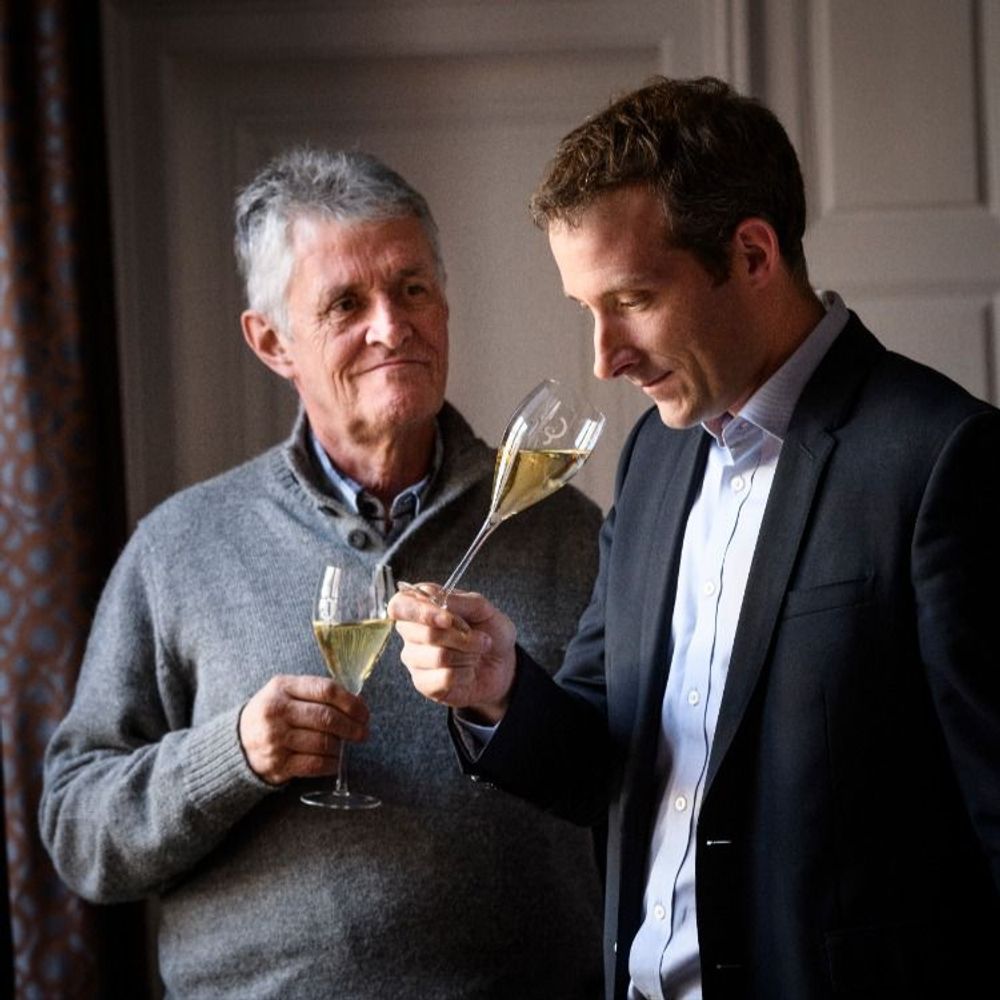
Mathieu Roland-Billecart tasting with his cousin François who he replaced as CEO three years ago
Will 2008 be the last great ‘fresh’ vintage in Champagne?
“I’m not see we’re going to have a harvest like this again,” Mathieu says in all seriousness about the fresh 2008 vintage.
2008 was dominated by grey, overcast skies – an exception in a decade characterised by bold, generous sunshine. Spring and summer brought the same lack of sunlight and absence of high temperatures. It was September that belatedly saved the vintage. Just when the harvest was getting underway (on September 15), the weather conditions were finally perfect: blue skies and prolonged north-northeasterly winds. Picking was spread out over a long period in order to benefit from this positive turn of events and, as a result the grapes were riper than expected with an impressive balance.
The reason Mathieu believes 2008 will be the final fresh vintage is climate change, which has been making its presence felt particularly in Champagne over the past 20 years. So what is Billecart-Salmon doing to cope?
“There are some short term things we are doing – for example, how do we play the year? – and more long term things – for example, when we buy parcels now we are very careful about position, we favour the North-facing ones, we are also very careful with the clones, the base of the vine. Historically these were planted because they were accelerating the maturity, which sounded like a great idea 20 years ago but is somewhat less of a good idea now, but going forwards this is probably the most powerful lever that Champagne will have to play with.” he says.
“You’re obviously not going to pull all the vines out but I think the methods of working will change: the grass coming back into the vineyards; the methods of ploughing we use create competition for the plant; how you take out the leaves or not; how much you work with the growth of the plant. This, again, is a key lever, so now, for example, we take the leaves out on the sun-rising side which creates more aeration in the vines, reduces growth and the number of diseases. I think the general approach we use is going back to the 70s and 80s where the approach to fertilisers was very different, so at Billecart-Salmon we do not use any weedkillers – the fertilisers are all forms of organic matter.”
The last piece of the jigsaw is to harvest the fruit sooner, with a precision that is based on tasting the grapes rather than scientific analysis, Mathieu says. It also has to be done parcel by parcel as he says unexpected factors can play a part, for example, the reflection from a nearby lake can accelerate maturity in the crop.
“Everything we are doing is to not accelerate the plant’s maturity and it’s not just one method – this is like a tool box and you have to adapt your method to the parcels… each parcel they’re like human beings.”
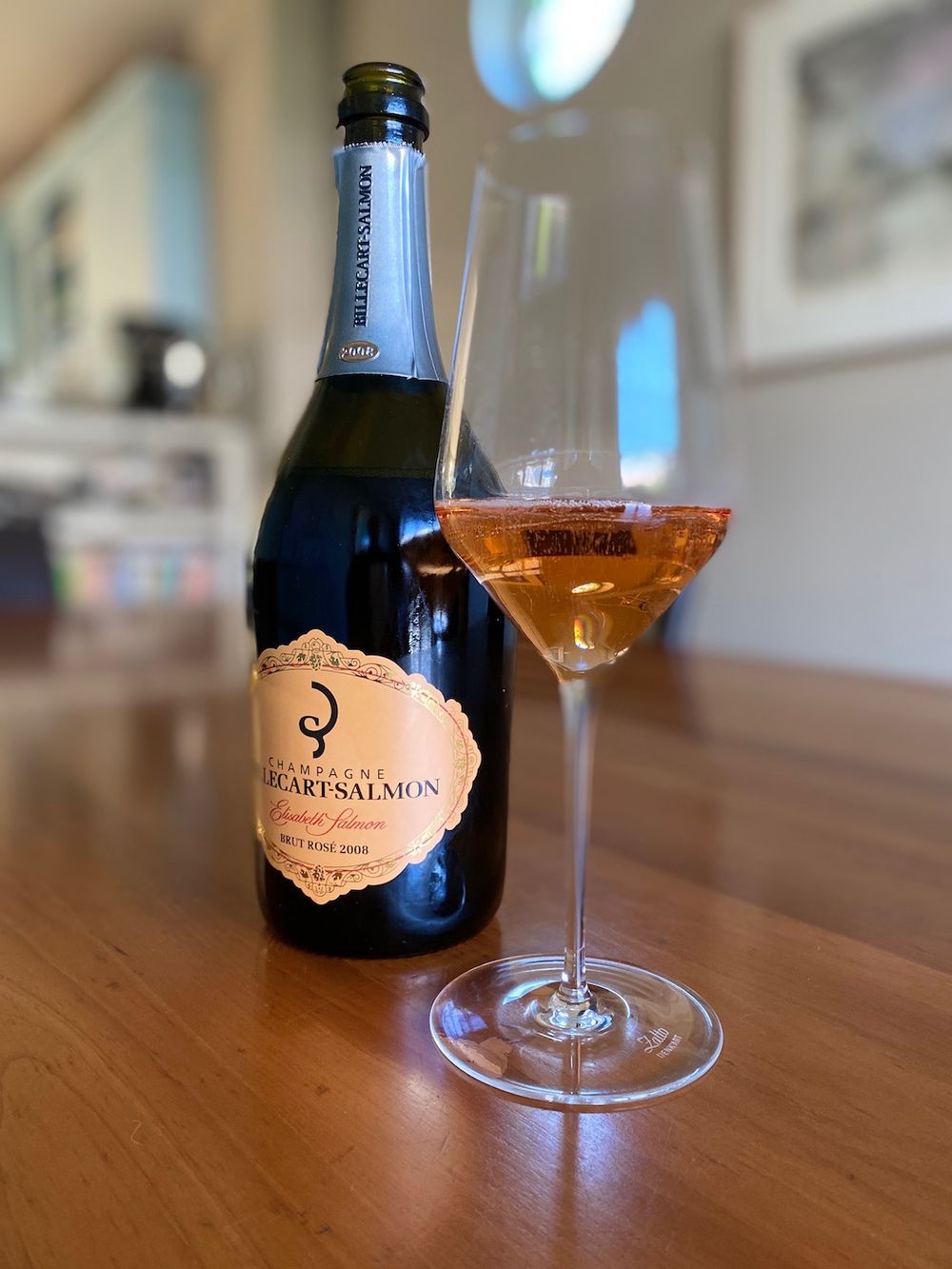
So what does the new Elisabeth Salmon, Brut Rosé 2008 taste like?
This is a spectacular Elisabeth Salmon make no mistake, it just oozes pure class from the first pour to the last drop. It is delicate, refined, complex, finely detailed and stylish with a capital S.
At first sight it is clear we are dealing with a serious Rosé Brut here. The colour is a deep salmon pink/ copper hue with saffron highlights. There is real luminescence in the glass with a steady bead of fine bubbles. The nose is complex, aromatics include lemon and orange peel, redcurrant jelly, ripe red apple, rose petals, raspberry pavlova, rhubarb, watermelon, salty air.
The mousse is ample on the attack with red berry fruit on the front palate – redcurrants, wild strawberry – then hints of ripe peach, oyster shell, blood orange ending with a citrus twist (tangerine, lemon zest) and a refreshing hit of saline on the back palate. Very long length.
Structured with tightly-wound, nervy acidity, well-knitted together with the balance simply spectacular. The wine is highly textured, silky, micro-oxygenated, mineral, with an attractive creamy note. One of the best and most serious Rosé Champagnes I have ever tasted.
And if you want the precise technical information…
Vineyards: 76% Grand Cru and 24% Premier Cru. 55% Pinot Noir from the Montagne de Reims and the Grande Vallée de la Marne. 45% Chardonnay from the Côtes des Blancs. 9% of the Pinot Noir is vinified as red wine with grapes from Valofroy, a parcel of old vines in Mareuil-sur-Aÿ with a full southern exposure. Fermentation: 17% of the wine is fermented and matured for 10 years on the lees in 15 year-old oak barrels. Dosage is 7 g/l (one gram higher than the 2007 vintage). The wine was disgorged in June 2019. Drink: Now to 2031+
We also tasted the Elisabeth Salmon alongside the Brut Rosé NV to compare and contrast. The NV is a blend of 40% Chardonnay and 30% each of Pinot Noir and Pinot Meunier. The wine is paler and more delicate in character, it has plenty of fruit which is more generous, primary and red in character.
